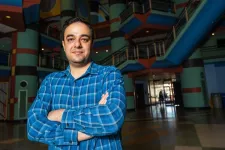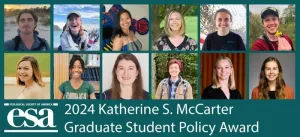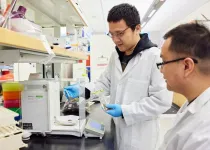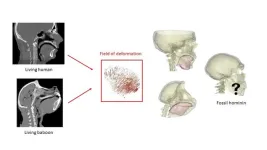(Press-News.org) New research from the University of British Columbia reveals a safe path to overcoming food allergies for older children and others who can’t risk consuming allergens orally to build up their resistance.
It’s called sublingual immunotherapy (SLIT), and it involves placing smaller amounts of food allergens under the tongue.
A study conducted by UBC clinical professor and pediatric allergist Dr. Edmond Chan and his team at BC Children’s Hospital Research Institute found SLIT to be as safe and effective for high-risk older children and adolescents as oral immunotherapy is for preschoolers.
“Our work confirms the safety and effectiveness of SLIT for older children and adolescents with multiple food allergies at higher risk of severe reaction,” said Dr. Chan. “These are patients for whom oral immunotherapy would typically be denied because it’s felt to be too risky, so this could be the best approach for that population.”
Previously published research from Dr. Chan’s team has shown that preschool oral immunotherapy is safe and effective in the real world. The protocol involves a “build-up phase” of several months, when patients visit a clinic every two weeks to ingest a higher dose of an allergen under medical supervision before continuing the same daily dose between visits. When they reach a certain dose—usually around 300 mg of protein —they enter a “maintenance phase” during which they take that target daily dose at home. After a year of maintenance doses, approximately four out of five patients are able to pass an oral challenge test in which they tolerate a much higher dose of 4,000 mg of protein.
However, the build-up phase is risky for older children and those with a history of severe reactions. Dr. Chan’s group has been looking for a safer way to get this at-risk group of patients to the maintenance phase.
They recruited about 180 such patients between the ages of four and 18, most with multiple food allergies. The SLIT protocol (started when COVID-19 pandemic restrictions were in place) required patients to have virtually supervised appointments 3-5 times over several months to build up to a small dose—in most cases, just 2 mg of protein—which is absorbed through the membranes under the tongue rather than swallowed and ingested.
The patients’ caregivers learned how to mix and administer these doses at home using novel recipes based on products you can buy at the grocery store, developed with the team’s research dietitian. A wide variety of allergens were treated, including peanut, other legumes, tree nuts, sesame, other seeds, egg, cow’s milk, fish, wheat, shrimp, and other allergens. Patients took these doses daily for 1-2 years.
“It takes up to twice as long as oral immunotherapy, but we wouldn't have had it any other way, because we needed the superior safety of SLIT for these older kids that are felt to be more severe,” said Dr. Chan.
While most patients had mild symptoms during the build-up phase, none had severe reactions during either build-up or maintenance. Seventy per cent of those tested at the end of the protocol could tolerate 300 mg of their allergen—a success rate nearly as high as that for oral immunotherapy.
The results were encouraging for a therapy that any family can undertake at home with guidance from professionals.
“Besides safety considerations in older children, allergists are often quite burdened by the oral immunotherapy build-up phase, where a patient may require 11 or more visits to the clinic. They just don’t feel they have the capacity to offer that many visits in their office,” said Dr. Chan. “In our clinic, we are starting to do more home-based approaches because the demand for medical appointments that would allow supervision far outstrips the supply. We are trying to develop an approach, based on data, that matches a patient’s risk level with the appropriate amount of supervision. Our SLIT data suggests that home-based SLIT build-up is safe.”
Ultimately, the trial highlights an alternative that allergists should now consider for patients who cannot safely undertake oral immunotherapy. The trade-off for greater safety is simply a longer timeline, but it comes with the benefit of keeping clinics free for those who need them most.
The study was published this week in The Journal of Allergy and Clinical Immunology.
END
A safer treatment path for high-risk children to overcome food allergies
2024-02-28
ELSE PRESS RELEASES FROM THIS DATE:
Researchers create method to detect cases of anemia in archaeological remains
2024-02-28
Hamilton, ON, Feb. 28, 2024 – Diagnosing anemia in living people is typically a matter of a routine blood test.
Retrospectively diagnosing anemia in people who died decades or even centuries ago is much more challenging since there is no blood left to test.
Anthropologists at McMaster University and the University of Montreal, working with a hematologist colleague, have overcome that obstacle by developing a way to detect anemia through patterns in the structures of bones.
Paleopathologists Megan Brickley, ...
Data-processing tool could enable better early stage cancer detection
2024-02-28
Cancers begin with abnormal changes in individual cells, and the ability to track the accumulation of mutations at the single-cell level can shed new light on the early stages of the disease. Such knowledge could enable more effective early detection and treatment options for patients as well as more accurate predictions of disease progression.
According to a paper in Nature Communications, a team of Rice University researchers led by Luay Nakhleh has developed a platform for integrating DNA and RNA data from single-cell sequencing with greater speed and precision than more recent, state-of-the-art technologies. The method, mapping cross domain ...
ESA 2024 Graduate Student Policy Award Cohort named
2024-02-28
The Ecological Society of America is pleased to announce the recipients of the 2024 Katherine S. McCarter Graduate Student Policy Award (GSPA). Students in the 2024 cohort are engaged in advocacy with an interest in science policy. Awardees will travel to Washington, D.C., for policy, communication and career training followed by meetings with lawmakers on Capitol Hill.
“I am thrilled to welcome this latest cohort of Graduate Student Policy Awardees,” said ESA President Shahid Naeem. “The caliber of this year's awardees, as has been true for awardees in our program since its inception, reflects ...
Five Sandia Labs scientists earn 2024 Black Engineer of the Year Awards
2024-02-28
Dissecting doorbells, exploring music, mastering retail software, love of the arts and old-fashioned hard work were early paths that led five Sandia National Laboratories engineers to their callings and recently earned them national Black Engineer of the Year Awards.
The awards, recognizing outstanding achievements in engineering, science and technology, include Science Spectrum Trailblazer, Modern Day Technology Leader, Most Promising Engineer in Industry and the Senior Investigator Award.
Each Sandia award winner has made significant contributions in creative, innovative and science-based systems engineering solutions to help solve our nation’s most challenging national security ...
'Cosmic lighthouses' that cleared primordial fog identified with JWST
2024-02-28
UNIVERSITY PARK, Pa. — Scientists working with data from NASA's James Webb Space Telescope (JWST) have obtained the first full spectra of some of the earliest starlight in the universe. The images provide the clearest picture yet of very low-mass, newborn galaxies, created less than a billion years after the Big Bang, and suggest the tiny galaxies are central to the cosmic origin story.
The international team of researchers, including two Penn State astrophysicists, published their results ...
Avian influenza virus is adapting to spread to marine mammals
2024-02-28
The highly pathogenic avian influenza virus H5N1 has adapted to spread between birds and marine mammals, posing an immediate threat to wildlife conservation, according to a study from the University of California, Davis, and the National Institute of Agricultural Technology (INTA) in Argentina.
The study, published in the journal Emerging Infectious Diseases, is the first genomic characterization of H5N1 in marine wildlife on the Atlantic shore of South America.
For the study, scientists collected brain samples from four sea lions, one fur seal and a tern found dead at the most affected sea lion rookery in Argentina. All ...
Study reveals accelerated soil priming under climate warming
2024-02-28
A first-of-its-kind study led by researchers at the University of Oklahoma highlights a crucial biosphere feedback mechanism and its effects on releasing soil carbon into the atmosphere.
Jizhong Zhou, the director of the Institute for Environmental Genomics and George Lynn Cross Research Professor in the School of Biological Sciences at OU, is the corresponding author of, “Experimental warming accelerates positive soil priming in a temperate grassland ecosystem,” recently published in Nature Communications. Zhou said the study is the first to utilize laboratory and field experimental ...
Improving children’s access to care could mitigate the health consequences of exposure to neighborhood violence
2024-02-28
A new collaborative study between Boston Medical Center, Brigham and Women’s Hospital, Boston Children’s Hospital, Hennepin Healthcare Research Institute, University of Pennsylvania, and Children’s Hospital of Philadelphia finds exposure to neighborhood violence among children was associated with unmet health needs and increased acute care utilization. Published in the American Journal of Preventive Medicine and based on nationally representative data on violence exposure and gold standard access to care measures from the National Health Interview Survey, this study shows that evidence-based interventions to improve access to care in communities ...
Molecular clusters on glial cells show they are more than our brain’s ‘glue’
2024-02-28
Neuroscientists at Fred Hutchinson Cancer Center have found that an often-overlooked type of brain cell called glia has more of a role in brain function than previously thought.
In the journal Cell Reports, Fred Hutch neuroscientist Aakanksha Singhvi, PhD, and her team report that a single glial cell uses different molecules to communicate with different neurons. Careful clustering of these molecules ensures that the glial cell can conduct a distinct “conversation” with each neuron. Through these molecular facilitators, glia can influence how neurons respond to environmental cues like ...
New method enables 3D tongue modelling, for example from fossilized hominin skulls, and might help understand the emergence of human speech
2024-02-28
New method enables 3D tongue modelling, for example from fossilized hominin skulls, and might help understand the emergence of human speech.
####
Article URL: https://journals.plos.org/ploscompbiol/article?id=10.1371/journal.pcbi.1011808
Article Title: Predicting primate tongue morphology based on geometrical skull matching. A first step towards an application on fossil hominins
Author Countries: France
Funding: This work is a production of the members of the team "Origins of speech" hosted at Sorbonne University - Institut des Sciences du Calcul et des Données. The funders had no role in study design, data collection ...










